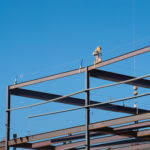
Not all home upgrades are created equal, especially when it comes to plumbing. Some updates quietly boost buyer confidence and smooth out inspections, while others barely move the needle (or worse, raise red flags). Here’s a breakdown of which plumbing improvements actually add value, and which ones to skip.
Does Repiping A House Add Value?
Yes, but with a caveat: it adds invisible value. Replacing old galvanized steel or polybutylene pipes with copper or PEX won’t wow buyers like a kitchen remodel, but it silently removes red flags that kill deals during inspection. This type of plumbing upgrade won’t yield flashy appraisal gains, but it smooths the path to closing, removes price objections, and can prevent insurance denials, all of which matter when market conditions tighten.
The real payoff comes when buyers don’t have ammunition to demand a $15K credit because “the pipes are aging.” It’s not about ROI, it’s about protecting your leverage during negotiation. Repiping rarely sells a house on its own, but it does something far more powerful: it prevents price erosion during the inspection phase. Don’t sell the pipes, sell what they protect.
It pays off when your home is 30+ years old and still has galvanized, lead, or polybutylene piping, especially in hot real estate markets where buyers expect move-in ready systems. It also makes sense if you’re already remodeling a bathroom or kitchen: walls are open, labor is on-site, and the marginal cost to upgrade plumbing is much lower. Water pressure issues, discoloration, or leaks that impact livability or insurability are another strong case. So are pre-listing inspections that reveal corrosion or outdated materials that could delay or derail a sale.
Also, in some states, repiping is a shortcut to qualify for better home insurance rates. Agents know the difference between PEX and 50-year-old galvanized. Mention this perk and you’re not just selling new plumbing, you’re selling lower monthly premiums. Strategic framing: “Updated plumbing for better water flow and insurance eligibility.”
Does A New Water Heater Increase Home Value?
It’s mostly maintenance, but strategic timing can make it feel like an upgrade. Buyers expect hot water. So unless the old unit is visibly failing or ancient (12+ years), a new water heater won’t generate a big value boost on its own. However, if your current unit is near end-of-life (8-12 years), replacing it can reduce buyer negotiation power and ease anxieties around potential failure. Most buyers overestimate the cost and complexity of water heater issues, so highlighting a brand-new unit accelerates decision-making.
Energy-efficient models (especially ENERGY STAR) can nudge resale value up slightly by signaling modern, eco-conscious infrastructure. Paired with other updates, like a new kitchen or bathroom, it reinforces the “turnkey” appeal. If you’re installing one anyway, go for a higher-efficiency unit or even tankless (more on that below), so it doubles as a feature instead of just a fix.
Instead of installing a water heater and checking a box, make it a conversation starter in your listing. A small framed placard near it, “Installed 2025. High-efficiency unit. Saves approx. $140/year on gas bill.”, turns it into a story with savings. And if you’re not upgrading the heater, at least flush and descale it, then advertise “tuned for efficiency.” It costs under $200 but shows proactive care.
Tankless water heaters can add value, if your market understands and desires them. They’re not just trendy; they solve real pain points like endless hot water, reclaimed space in closets or garages, and lower long-term energy costs. In energy-conscious areas like California or the Pacific Northwest, or in homes where space is at a premium, tankless units are especially compelling. They also shine when integrated with smart home upgrades or solar systems.
However, in colder climates or among buyers unfamiliar with tankless tech, they can prompt concerns like whether it’ll keep up in winter. In regions with ultra-low utility costs, where savings won’t justify the price tag, they’re less effective. And for buyers who want the simplicity of a traditional tank, the benefits may be lost.
The key is positioning. Tankless systems are like dual-fuel stoves, luxurious to some, confusing to others. Market to the right audience. Include the flow rate in your listing (“Supports 2 showers and dishwasher at once”) so people understand the functional benefit, not just the label. Most agents miss this, don’t be one of them.
They’re not just fancy, they’re an identity signal. Tankless systems appeal to buyers who see themselves as forward-thinking. They’re not buying hot water. They’re buying efficiency without sacrifice, space-savvy infrastructure, and a modern home that “thinks ahead.” This resonates especially well with younger, eco-conscious buyers or downsizing boomers who prioritize low-maintenance living.
Are Plumbing Upgrades Worth It For Better Water Quality?
They’re less about home value, more about home appeal. Whole-home filtration or water softening won’t move the appraisal needle, but they differentiate your listing in regions with known water issues (hard water, chlorine taste, high sediment), appeal to families, health-conscious buyers, or pet owners who prioritize water quality, and prevent future damage to faucets, appliances, and pipes, an invisible benefit with long-term ROI.
These types of plumbing upgrades save water by reducing wear and scale on systems that would otherwise waste energy and flow capacity. They’re worth it emotionally. You’re not selling a filter. You’re selling a future without bottled water, sparkling glasses, and a baby’s first bath that doesn’t smell like chlorine.
In short-term rental markets, softeners extend appliance life. In rural areas, filters reduce turbidity and protect resale. And in regions with PFAS awareness, filtration = peace of mind.
Smart approach: Highlight these upgrades in your listing as “lifestyle” perks. Don’t expect direct ROI, but do expect faster interest from educated buyers. Add a QR code to your brochure or listing that links to the system’s water quality test or maintenance log. It’s a simple trust-builder.
Does New Plumbing Increase Home Value?
Noticeable (and marketable): Tankless water heaters, updated fixtures in kitchens and baths (especially matte black, brass, or designer finishes), smart leak detection systems like Flo by Moen or Phyn Plus, freestanding tubs with stylish exposed plumbing, and water filtration or softening systems, when marketed right. These plumbing upgrades save water, impress buyers, and tell a story of proactive ownership.
Unnoticed but still valuable, mostly during inspection, are things like re-piping with modern PEX or copper, drain and sewer line upgrades, pressure-balancing valves, anti-scald systems, proper venting, and backflow prevention. These won’t show up in listing photos but they matter when the inspector walks through.
Forgettable or neutral upgrades include basic builder-grade faucets or toilets, new water heaters that simply replace the old without any efficiency story or visual cue, and DIY-looking work or mismatched finishes.
What buyers do notice: exposed designer fixtures, utility rooms with labeled shutoff valves and a clean pipe layout, smart water systems with app control, and water heaters or softeners with visible branding and service tags.
What they don’t: new drains (unless the old ones were visibly gross), sewer cleanouts (unless part of a larger remodel), and code-compliant traps or vents.
Pro tip: Add a laminated “plumbing highlights” sheet during open houses with photos of hidden upgrades. Most buyers never see behind the walls. Now they will.
Do Plumbing Upgrades Depend on Location?
They’re massive levers for value, but easy to overlook. In regions like Texas, Arizona, and parts of Florida, softener or filtration systems aren’t just nice, they’re expected. Skipping one can cost you. Same goes for Arizona’s heat: if your pipes aren’t rated for high temperatures, you’re losing resale leverage. CPVC or Uponor PEX-A with UV protection helps maintain value and durability.
Cold climates demand more than code compliance. Insulated, freeze-resistant piping offers peace of mind that buyers notice. In Florida, elevating your water heater adds flood resilience, a subtle signal of storm-readiness. Coastal and flood-prone zones also benefit from check valves and sump pump upgrades, which quietly increase perceived value.
In earthquake-prone areas, flexible piping and seismic bracing on water heaters are not only required, they demonstrate proactive safety upgrades. New York City co-ops are their own ecosystem, where upgrading waste lines to cast iron can reduce sound transfer between units and becomes a luxury talking point.
Strict inspection areas like California make compliance critical, non-compliant systems tank deals fast. Tailor your plumbing upgrade strategy, and your marketing language, to the most urgent regional concerns. What’s “luxury” in one area is “bare minimum” in another. Turn local pain points into unique selling advantages. You’re not just compliant, you’re optimized.
And if you’re marketing in Texas, don’t just mention filtration, showcase it. Link to your system’s actual water test in the listing. That trust signal turns a standard plumbing upgrade into a strategic edge.
Plumbing Upgrades That Don’t Add Value
Yes, and they usually fall into three traps: invisible but unnecessary improvements, over-customization, and DIY projects.
Over-sizing pipes or upgrading materials beyond what’s needed, like installing copper when PEX would suffice, doesn’t raise value; it just raises cost. And while functional, amateur-looking plumbing work creates red flags during inspection, even if it technically “works.”
Over-customization shows up in a few ways: specialty shower panels, touch faucets, or designer sinks that don’t match the home’s style or price point can turn off buyers who see them as high-maintenance or not their taste. Same goes for spa tubs with 8+ jets, they may look luxurious, but often scream “1998” and come with a high-maintenance reputation. Imported niche fixtures without standard replacement parts might work in a magazine spread, but not in a real-world resale. And wall-mounted toilets, unless you’re marketing to high-end minimalists, often raise repair concerns and scare off average buyers. Even something like a chrome touchless faucet in an otherwise traditional home can cause visual dissonance and buyer disconnect.
Avoid wasting money by prioritizing function and compliance first, only going upscale when the rest of the home supports it, and documenting major changes for appraisals and buyer reassurance. Invest in cohesion: Match your plumbing upgrades to your home’s design language, buyer expectations, and neighborhood profile.
Image Source: WordHero Art



